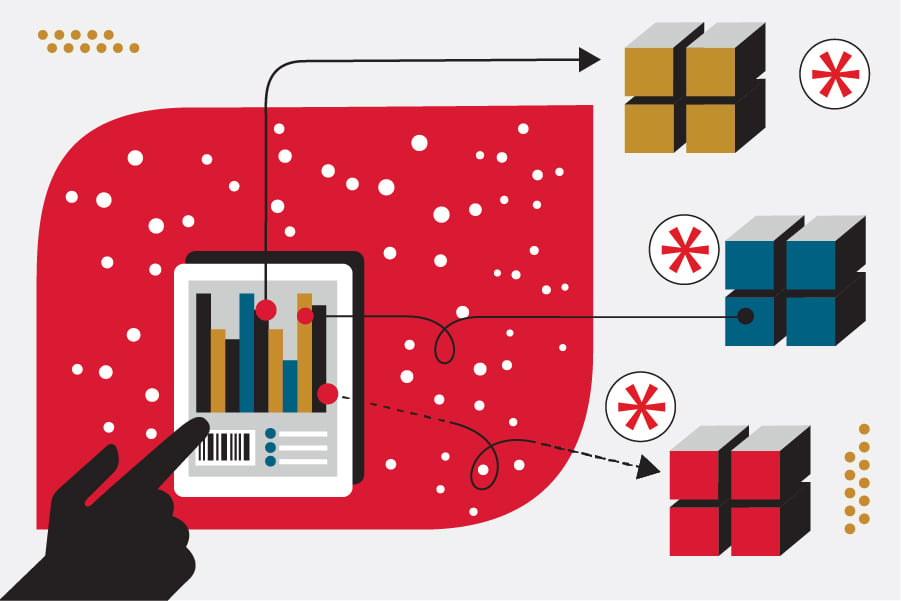Logistics
Warehousing & Fulfillment
Transportation
E-commerce
E-commerce Fulfillment Services
Lease & Maintenance
Semi Trucks
Supply Chain Technology
Logistics
E-commerce
Lease & Maintenance
Buy Used Trucks

Updated February 21, 2025
Staying ahead in logistics means keeping a close watch on your third-party logistics (3PL) partner. If you don’t, inefficiencies start creeping in—slow shipping, rising costs, unhappy customers. But how do you know if your provider is really pulling its weight? That’s where performance tracking comes in.
By keeping an eye on key performance indicators (KPIs), you’ll quickly spot whether your 3PL is a true asset or just coasting along. Let’s dive into why this matters and which KPIs should be on your radar.
Why Tracking 3PL Performance is a Must
Keeping Operations Agile
Your 3PL should be making things easier, not harder. A well-run logistics partner streamlines order fulfillment, optimizes storage, and ensures deliveries happen without a hitch. Regular performance checks help confirm they’re doing just that.
Holding Them to Their Promises
Your SLA (Service Level Agreement) lays out exactly what’s expected—timely deliveries, accurate inventory tracking, reliable service. But is your 3PL actually meeting those standards? If you’re not monitoring, you won’t know until problems start stacking up.
Cutting Out Hidden Costs
Slow warehouse processing? High return rates? Orders getting lost in transit? These issues bleed money. Digging into the right data can reveal where waste is happening—and where you can save.
Protecting Your Brand Reputation
Customers expect fast, error-free deliveries. If your logistics provider is struggling, they won’t blame the 3PL—they’ll blame you. Performance tracking ensures you’re delivering the experience your customers expect.
The KPIs You Can’t Ignore
Lead Time: The Pulse of Your Supply Chain
How long does it take for an order to move from confirmation to delivery? That’s your lead time, and in today’s fast-paced market, every second counts. A sluggish lead time can lead to abandoned carts and frustrated customers. To stay competitive, businesses should implement real-time tracking, optimize warehouse operations, and leverage predictive analytics to anticipate delays before they happen.
Cost Per Order: Where Every Dollar Goes
Every fulfilled order carries a cost—warehouse fees, labor, packaging, shipping, and more. If these expenses start climbing, it’s time to assess where inefficiencies lie. Can you reduce packaging waste? Optimize shipping routes? Negotiate better rates with carriers? Smart cost control isn’t just about cutting expenses; it’s about maximizing value.
Inventory Accuracy & Shrinkage: Keeping the Numbers Honest
How closely do reported inventory levels match what’s physically on the shelves? Shrinkage from theft, damage, or miscounts can quietly drain profits. Businesses should implement frequent cycle counts, RFID tracking, and tighter security to prevent stock discrepancies. The goal? Ensure that every item is accounted for and ready to move when demand spikes.
Dead Stock: The Silent Profit Killer
Unsold inventory sitting idle isn’t just taking up space—it’s tying up capital that could be reinvested elsewhere. Businesses should conduct regular SKU rationalization, analyze seasonal trends, and implement clearance strategies to keep stock moving. A proactive approach to inventory turnover can be the difference between profit and loss.
Perfect Order Rate (POR): Delivering on Customer Expectations
A customer’s ideal order arrives on time, complete, and damage-free. If your POR is low, something’s slipping—perhaps in order picking, packing, or transit. Addressing these weak points through better training, barcode scanning, and improved quality control processes ensures fewer mistakes and happier customers.
Time on Dock: Eliminating Warehouse Gridlock
Inventory sitting on the dock waiting to be processed can create supply chain disruptions. The longer it lingers, the more it slows down order fulfillment. Businesses should streamline warehouse receiving, invest in automation, and refine staffing schedules to get products where they need to be—fast.
Return & Exchange Rate: A Health Check on Accuracy
Returns happen, but when they spike due to fulfillment errors, damaged products, or incorrect shipments, it’s a sign that something needs fixing. Businesses should analyze return trends, improve packaging durability, and ensure order accuracy to minimize costly returns and improve customer trust.. Customers expect fast shipping, so a long lead time can lead to cart abandonment and lower customer retention. To improve lead time, businesses should analyze warehouse efficiency, optimize carrier selection, and implement technology-driven tracking solutions.
Keeping Your 3PL in Check
Measuring 3PL performance isn’t a one-time task—it’s ongoing. Reviewing KPIs regularly, having open conversations with your provider, and making data-backed adjustments will keep your supply chain in top shape.
Want more insights on running a smarter supply chain? Check these out:
When you take a proactive approach to logistics, you don’t just avoid problems—you build a supply chain that actually fuels your business growth.